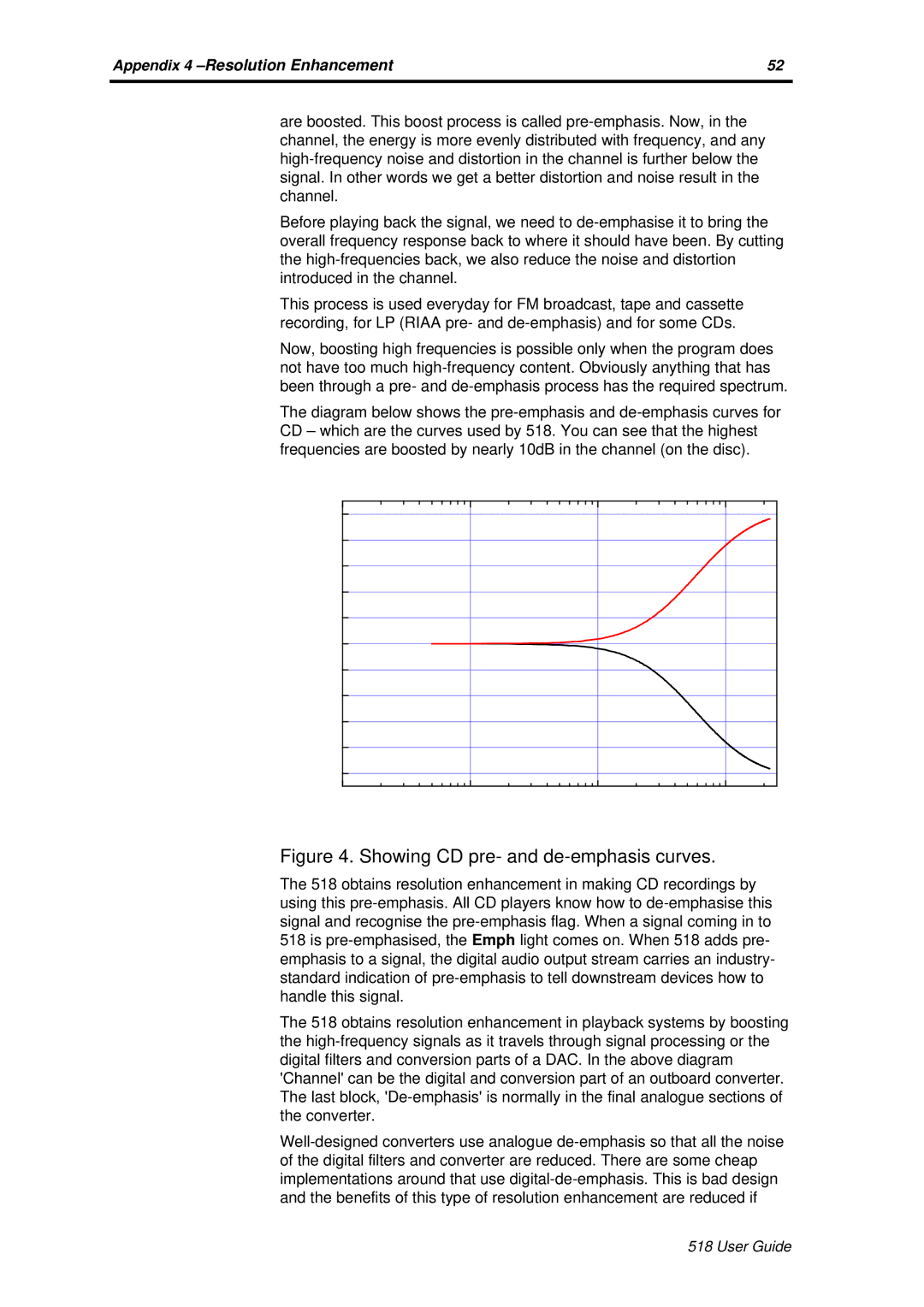Appendix 4 –Resolution Enhancement | 52 |
| |
are boosted. This boost process is called pre-emphasis. Now, in the channel, the energy is more evenly distributed with frequency, and any high-frequency noise and distortion in the channel is further below the signal. In other words we get a better distortion and noise result in the channel.
Before playing back the signal, we need to de-emphasise it to bring the overall frequency response back to where it should have been. By cutting the high-frequencies back, we also reduce the noise and distortion introduced in the channel.
This process is used everyday for FM broadcast, tape and cassette recording, for LP (RIAA pre- and de-emphasis) and for some CDs.
Now, boosting high frequencies is possible only when the program does not have too much high-frequency content. Obviously anything that has been through a pre- and de-emphasis process has the required spectrum.
The diagram below shows the pre-emphasis and de-emphasis curves for CD – which are the curves used by 518. You can see that the highest frequencies are boosted by nearly 10dB in the channel (on the disc).
Figure 4. Showing CD pre- and de-emphasis curves.
The 518 obtains resolution enhancement in making CD recordings by using this pre-emphasis. All CD players know how to de-emphasise this signal and recognise the pre-emphasis flag. When a signal coming in to 518 is pre-emphasised, the Emph light comes on. When 518 adds pre- emphasis to a signal, the digital audio output stream carries an industry- standard indication of pre-emphasis to tell downstream devices how to handle this signal.
The 518 obtains resolution enhancement in playback systems by boosting the high-frequency signals as it travels through signal processing or the digital filters and conversion parts of a DAC. In the above diagram 'Channel' can be the digital and conversion part of an outboard converter. The last block, 'De-emphasis' is normally in the final analogue sections of the converter.
Well-designed converters use analogue de-emphasis so that all the noise of the digital filters and converter are reduced. There are some cheap implementations around that use digital-de-emphasis. This is bad design and the benefits of this type of resolution enhancement are reduced if

